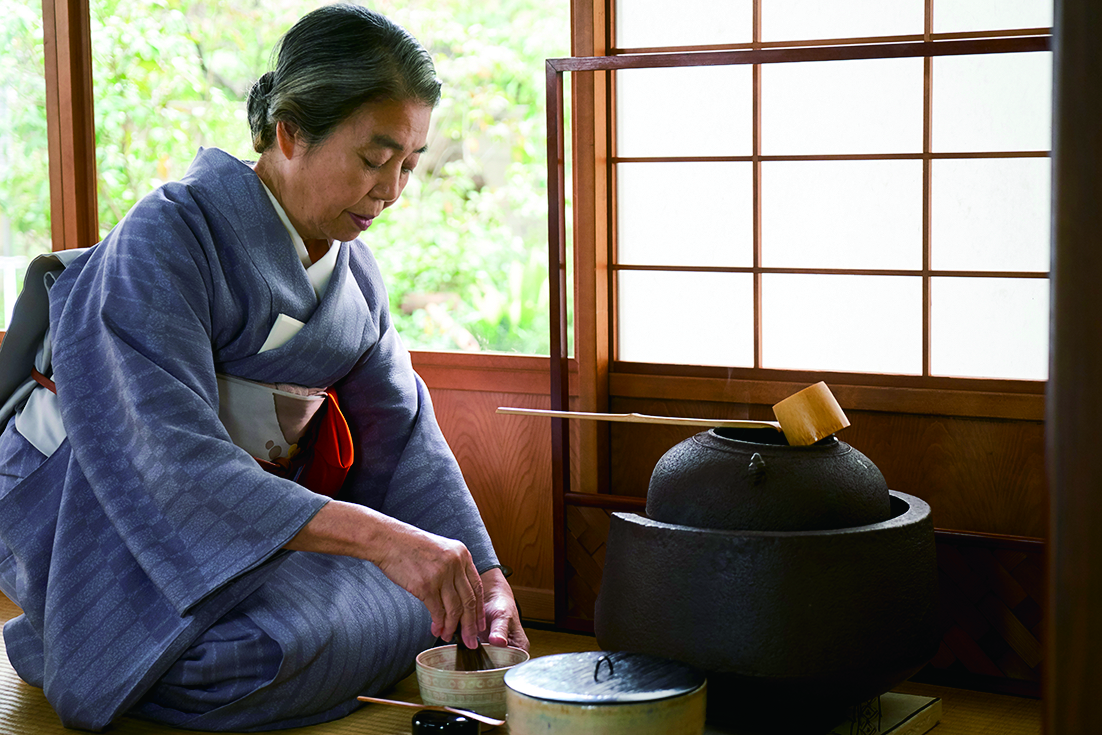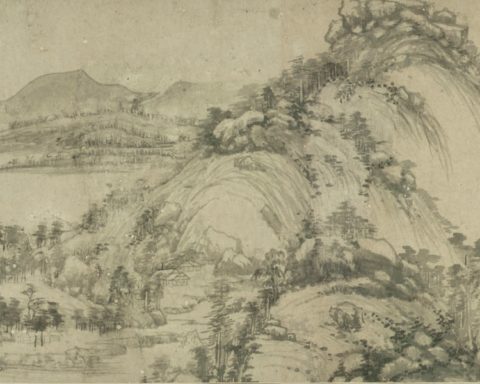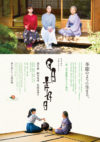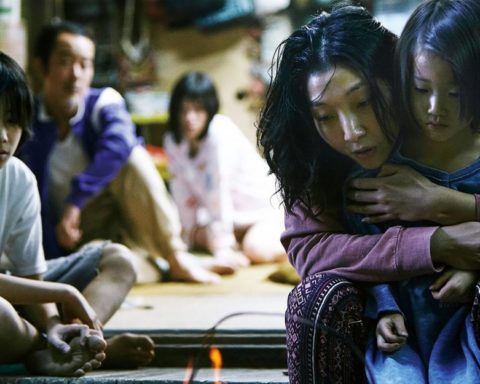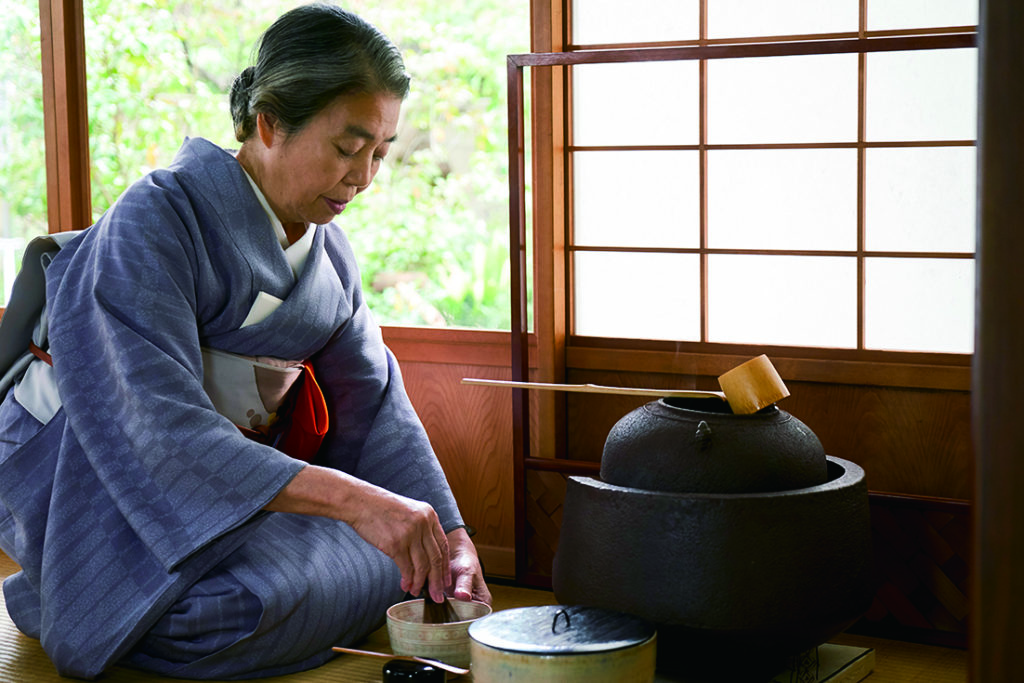
EVERY DAY A GOOD DAY is about a young woman’s induction into Japanese Tea ceremony over two decades. The movie is delivered by Tatsushi Omori in a light and refreshing fashion that reflects a most distinctive vein of Japanese cinema and provides an opportunity to dwell on the meaning and the origins of the ancient art of tea a.k.a. the Way of Tea.
In Japanese, certain words that are commonly used in everyday life have no equivalent in Western languages such as « Tadaima » (只今). When Japanese people would return to their home, they would often call out the word, “Tadaima”, as a greeting. The word means, “I‘m home” or more literally “Now (here)”. The person already inside would reply: « Okaeri » (お帰り), meaning “Welcome home”, but more literally, “(You are) returning home”. Similarly, “Otsukaresama” (お疲れ様) – which, in plain form, means “to be tired” – is used at the end of a workday between colleagues to show each other support. As a matter of fact, recognizing someone is tired can be read as, “you are tired because you have worked hard, so thank you”.
Thus, learning Japanese language – especially for a Western individual – boils down to questioning our very reflections on everyday life beyond traditional popular exotic imagery. Or else misunderstandings can occur, especially when it comes to abstract words. In Japanese history, slavery for instance never was a common practice. As a result, can we assume the English word « Freedom » and its Japanese equivalent « Jiyū » (自由) actually have the same meaning, the same nuances? Similarly, does the English word « Mind » and its Japanese equivalent « Kokoro » (心) share the same reality when in Japanese culture the mind and the body can not be conceived separately?
Those linguistic realities merely highlight different reference systems when it comes to ideas and concepts, based on different histories, values and ultimately cultures. This explains why many activities or practices exist in Japan only. What is commonly referred to as the Tea Ceremony being one of them.
With a history of more than 500 years, the tea ceremony unfolds according to a specific etiquette that has remained unchanged over the years: a tea master hosts up to five guests in a room with a hearth built into the floor then serves matcha – a slightly bitter and creamy green tea ground into powdered form (the green tea powder being whisked into hot water, instead of steeped, to form a frothy drink). After watching the host prepare the tea, guests are expected to eat sweets that are served to them before the tea is drunk. The host then cleans the utensils in preparation for putting them away – the guests may in turn examine some of the utensils to show respect and admiration for the host. The items (tea bowl, caddy, scoop, whisk) are treated with extreme care and reverence as they may be handmade antiques.
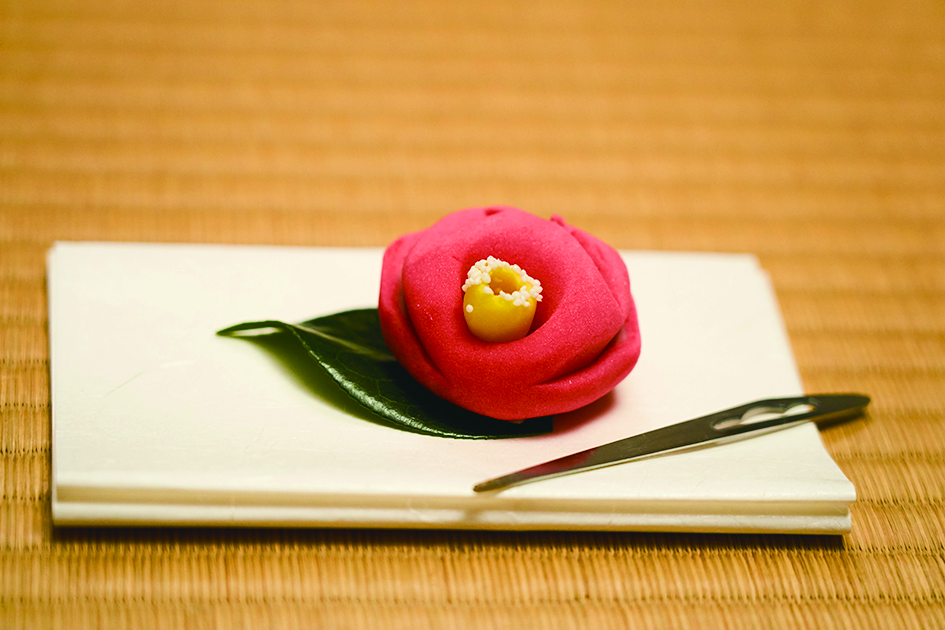
The word “ceremony” frequently used to describe the Japanese ritual may be misleading since it is unrelated to any religious practice. Nor does it commemorate any specific event or holiday. The ceremony can be performed at any time of the year and at all times of the day. There is no hidden meaning in the gestures performed by the tea master, which may eventually be very similar to those performed by anyone preparing matcha tea at home. At the end of the day, it’s nothing more than boiling water, making tea and drinking it!
The difference actually lies in the gestures, postures and movements performed by the tea master that need to comply with a set pattern named kata (形). Sitting on the tatami mat floor, using and placing every utensil, transferring hot water from the pot to the bowl and mix it with tea powder – every gesture and movement is as deliberate as graceful. There is no room for improvisation. Even the guest is supposed to drink tea according to a specific etiquette. There is no denying the tea ceremony requires full attention and focus from its participants – at the end of the day, it does actually meet the attributes of a ceremony.
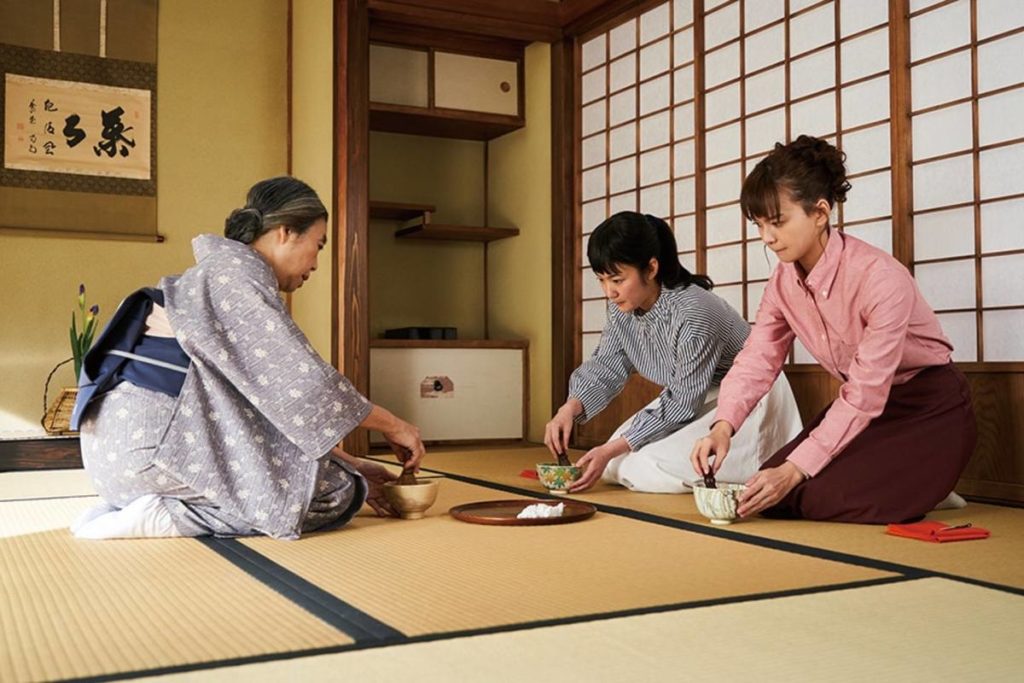
In Japanese, this cultural practice is known as Sadō (茶道), literally meaning the Way of Tea. The Way is a term used to denote the fundamental principle underlying a system of thought or belief, an art, or a skill. It is also used by extension to refer to the entire body of principles and skills that constitute an art. In this latter sense it is used in Japan as part of the name of a number of traditional skills or codes of behavior, as in Kadō (華道) for flower arrangement, Shodō (書道) for calligraphy, Kendō (剣道) for fencing, Kyudō (弓道) for archery, Judō (柔道, literally “the Way of Flexibility”), Kodō (香道) for the art of incense appreciation etc.
The activities mentioned above are neither considered as mere physical activities nor intellectual activities alone. The body and the mind complement each other, the Way thus addressing both concepts. The basis of the Way, resides in posture and body movement – both performed in a physical and mental fashion. These are related to an etiquette that forms a correct attitude toward life and reflects a deep inner focus.
If all ways relate to different practices, they all follow specific numbers and sets of katas – the very nature of which is inherent to the world they belong to. In that prospect, ways are nothing but activities defined by specific movements and postures1(1) Within a specific way, katas may vary according to schools or styles. However, each way acknowledges the katas they rely on only.. Practicing a way doesn’t require any theoretical teaching: it only requires the practitioner to be inducted by a master through the performance of katas that are inherent to that specific way. Repeating the katas until they are performed with confidence and grace being the ultimate goal.
The performance of katas is actually subject to certain external conditions: in martial arts, they depend on the opponent’s moves; on stage, they depend on the character types and moods; in the Way of Tea, they reflect the changing seasons. Tea ceremony in the summer and winter are not the same as in every season many aspects of the ceremony change including the state of mind.
Does the Way of Tea lead to a specific place?
The practice of Ways culminated in the Edo period (1603-1868) but they are actually rooted in the Muromachi period (1336-1573). However, those practices existed way before they were called ‘ways’.
As a matter of fact, although the Way of Tea is considered to have been founded by the monk Murata Jukō (1422-1502), the tea drinking ritual dates back to much more ancient times2(2) The ritual is said to date back from the 13th century – warriors practiced zen meditation then before it became some kind of leisure, consisting of appreciating both the quality of utensils used during the ceremony and the origin of the served matcha. The whole process was progressively codified starting from the 15th century and the ritual itself became as important as the drink.. The influence of Buddhist philosophy on the Ways during the Feudal period explains how they are perceived today.
Buddhism’s core teaching acknowledges that the root of all suffering is attachment: we want things to be while they are constantly changing. Our suffering influences our actions (karma), poisons them in a way so that we’re aimlessly wandering – forever lost in a circle of birth, rebirth or redeath (samsara). Buddhism considers that we reincarnate – reincarnation being defined as the re-embodiment of an immaterial part of a person after a short or a long interval after death, in a new body whence it proceeds to lead a new life in the new body more or less unconscious of its past existences, but containing within itself the “essence” of the results of its past lives, which experience goes to make up its new character or personality. In this context, the Way is the practice of non-attachment, i.e. meditation, in order to escape the cycle of reincarnation of Samsara and eventually achieve Nirvana.
In practice, it is less about renouncing material things than becoming aware of their emptiness (things don’t exist by themselves and are consequently ephemeral) and of our selves (“I” only exist with respect to everything else). That awareness is called awakening – in Japanese: satori (悟り).
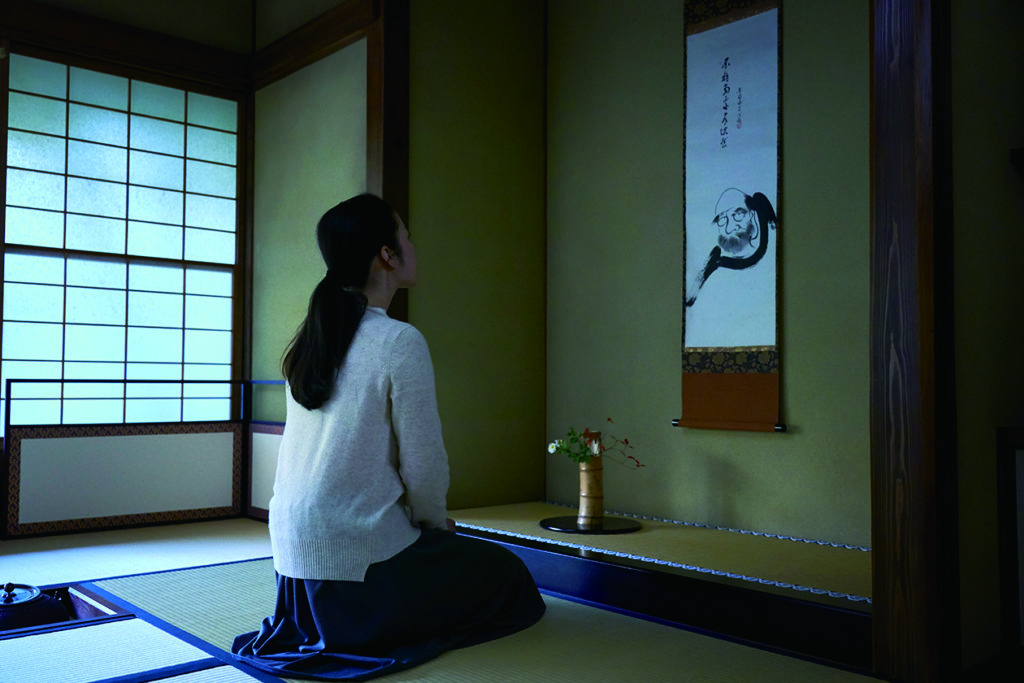
Since its origins, Buddhism has been divided into many schools of thought, which distinguish from each other either through a specific system of practices or through a different philosophical approach. According to Robert Heinemann(33) An expert in Japanese Buddhism, Robert Heinemann created the Japanese Studies chair at the University of Geneva where he was an honorary professor from 1980 to 1993. Audio recordings of his lectures and classes are available on the website of the university., if “some forms of Indian Buddhism represent the path to salvation as a journey that releases us from a painful existence […] ou as a kind of disintegration of our mental structures […], Far East Buddhism, and more specifically Japanese Buddhism, underlines that Samsara and Nirvana are not distinct but one while different. Deliverance is achieved inside Samsara and our torments: we can be awakened without undermining our mental structure”4(4) Heinemann, Major controversies in the history of Japanese ideas (https://mediaserver.unige.ch/play/56876, in French starting from 07:40).
The idea that enlightenment is not reached by practicing a gradual series of meditations with a beginning and an end, but is achieved here and now in our material world, has contributed to the emergence of new schools of thought including Zen Buddhism. According to them, we can detach ourselves from things and the suffering they cause by becoming aware of their emptiness at every moment of our thoughts. The path thus redefined no longer leads to a goal but is identified with a practice according to which awakening is achieved in the succession of moments. If there is deliverance, it takes place in the very flow of our thoughts.
The zen philosophy refers to this type of thinking as non-thinking (無心, Mushin). The word is not to be taken in the sense of an empty thought, but of a detached thought, slipping over all things without ever settling on them. In other words, it is not a question of thinking of nothing but of “thinking of all objects without being infected by them (…): at each moment of thought, we free ourselves from the constraints that we impose on ourselves by the thought of the previous moment. »5(5) Heinemann, Japanese Buddhism – a philosophy of nothingness (https://mediaserver.unige.ch/play/56799, in French starting from 37:40). Each moment of thought is lived fully for itself, as if it alone carries the sum of all the moments.
Known for having completed the codification of Noh (能, Nō) theater, Zeami (1363-1443) is considered the first layman to have reinterpreted the unfolding of ancient practices (in this case, dances and songs performed in the open air) in the light of Buddhist philosophy. He considers indeed that each gesture must be carried out for itself according to the principle of the non-thought and is also the first to propose a theory of the katas and to set as a goal a level of ease or freedom from which the spirit of the practitioner does not cling to anything any more once those katas perfectly mastered. In Zen, this state is compared to water which, having no color, shape, or taste, make take on all colors, shapes, and tastes, depending on the circumstances to which it is subjected.
The Way of Tea as it is practiced today is essentially the outcome of the conceptions bequeathed by Sen no Rikyū (1522-1591) in the continuity of Buddhist thought. His teaching revolved around the adage “one life, one encounter” (一期一会, ichi-go ichi-e), which is about understanding “everything must be done as if it were done only once in a lifetime”6(6) Heinemann, The Way and the Ways in Japan (https://mediaserver.unige.ch/play/56837, in French starting from 31:50). Each gesture, each meeting, each day represents an instant, or a series of instants, the particular circumstances of which only occur once in relation to all possible moments. Each moment opens up to the totality: it is about treasuring the unrepeatable nature of a specific moment.
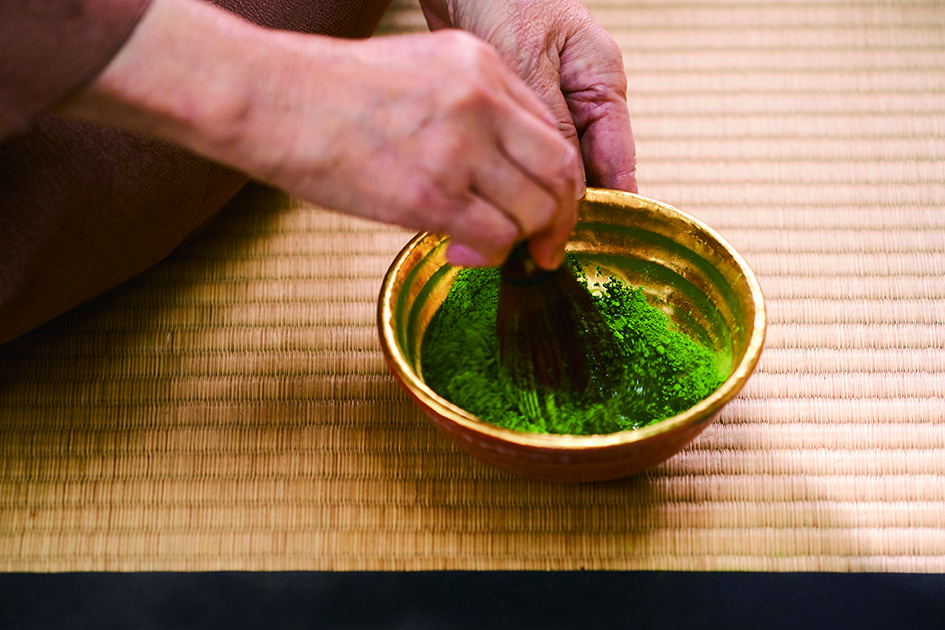
Opposed to the pomp and ostentation of certain tea meetings of his time, Rikyu advocated simplicity and simplicity according to the codes of the wabi-cha style (わび茶), both in the shape of the utensils used and in the layout of the room where tea is served7(7) The opposition between those two styles is displayed in the movie Love Under The Crucifix (1962) by Kinuyo Tanaka.. Reduced to a cramped surface (three or even two and a half mats), the room merely displays a floral composition or a calligraphy as decoration. Nothing more.
When practicing the Way of Tea, focus must remain total: the slightest drop of water poured, the slightest crumpling of tissue, the breathing itself participate in the course of the activity. It is at this price that the gestures, repeated over and over again, can be embraced by the personality of the practitioner and that the latter, over the course of days, seasons and encounters, can become aware of the purity of each moment and become one with them.
Like all ways, the Way of Tea is to be considered from the perspective of Buddhist practice and the search for enlightenment – which is summed up in the very title of Tatsushi Omori’s movie: Every Day is a Good Day.
Nicolas Debarle
A specialist of Japanese cinema, Nicolas Debarle is the author of many articles and festival reports published through internet (French online magazines Il était une fois le cinéma, EastAsia). He teaches French in Tokyo where he has been living since 2012.

